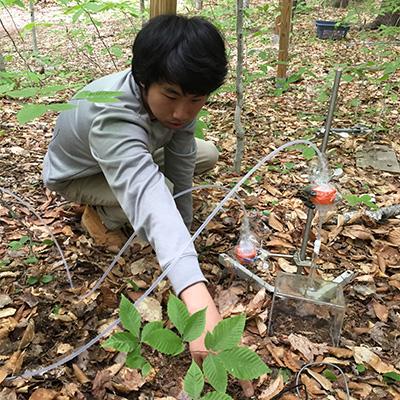Mercury in Wood is Declining but Climate Changes May Release More Soil Mercury

Understanding the source and fate of mercury in tree wood is important for projecting changes in mercury cycling in forests. NSRC researchers first established a reliable method for analyzing mercury in wood and found that freeze-drying samples or oven-drying them at 65°C are both satisfactory and avoid loss of mercury and accumulation from the environment.
Researchers quantified amounts of mercury in wood of dominant tree species at four sites in the Northern Forest: Hubbard Brook, NH; Bear Brook, ME; Huntington Forest, NY; and Sleepers River, VT. They found low concentrations of mercury in wood, but the massive amount of wood in forests makes wood mercury important. Mercury concentrations were greater in hardwood bark and wood than in foliage. In conifers, foliar mercury concentrations were higher, likely reflecting longer exposure to the atmosphere. In tree wood, mercury concentrations decline from top to bottom of tree trunks and from older to newer tree rings. This suggests that foliar uptake of mercury is more important than root uptake.
To understand climate change impacts on mercury cycling, researchers measured pathways of mercury accumulation and loss in forests using climate-change manipulation experiments at Hubbard Brook: a growing-season warming and winter freeze-thaw cycle, rainfall exclusion to mimic drought, and a simulated ice storm. They found that warmer soils in the growing season or more intense ice storms in winter may exacerbate mercury pollution by releasing mercury stored in soils. Mercury in wood is declining with time, likely due to reduced foliar uptake from a cleaner atmosphere, but climate changes may release more mercury from forest soils.
